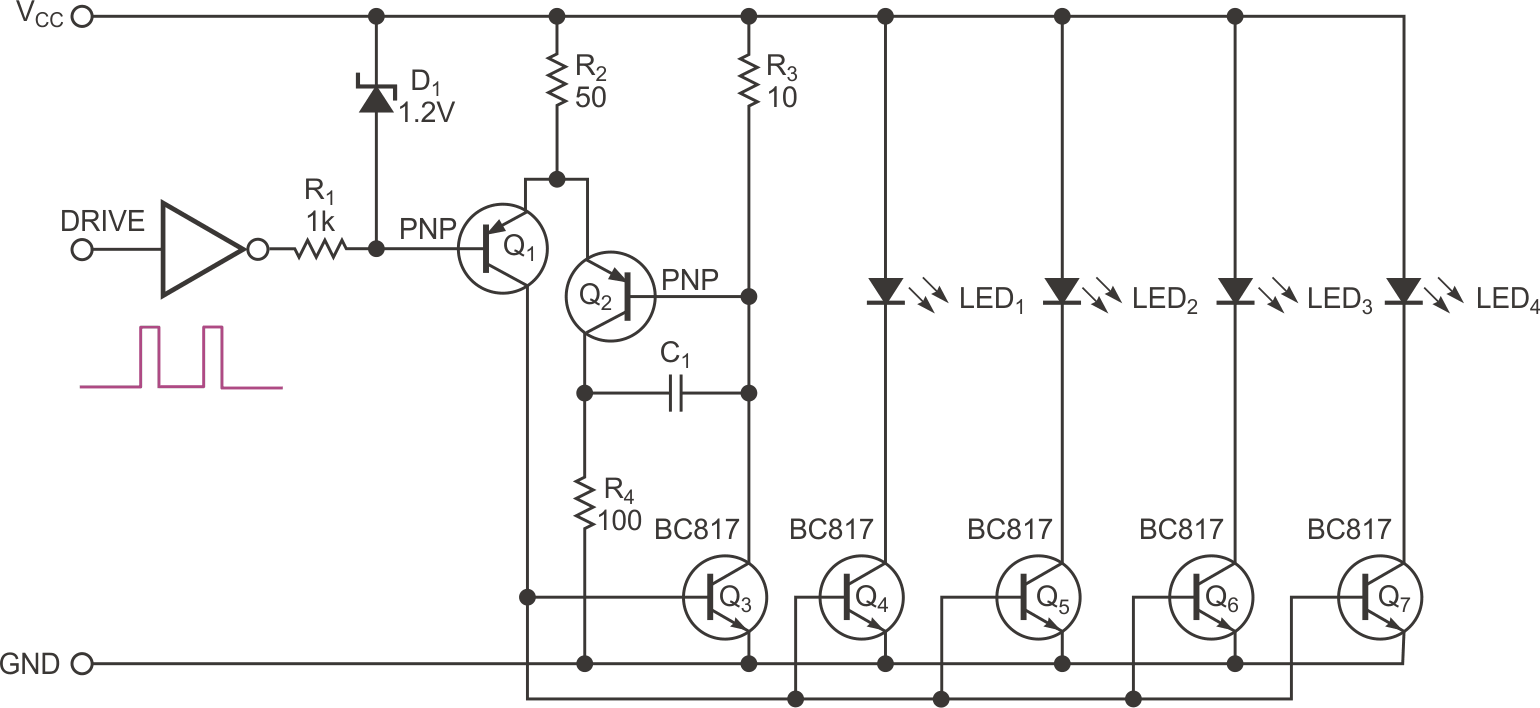Driving LEDs at a regulated current from low supply voltages can be difficult because minimal overhead voltage is available for control circuits. A current-mirror architecture is suitable but usually works only with ICs with well-matched transistors and in which the silicon substrate holds them at one temperature. However, high currents – approximately 100 mA – are not normally possible. A thermal runaway can occur in circuits using unfavorable combinations of discrete bipolar transistors. In this scenario, one LED-driver transistor becomes slightly hotter than the others, its gain increases, and it takes more current and gets even hotter until it self-destructs. This Design Idea shows how you can avoid this problem for pulsed-current-mirror applications.
 |
|
| Figure 1. | A pulsed-current mirror comprising transistors Q4 through Q7 drives multiple LEDs from a low supply voltage. |
The current mirror comprises Q4 through Q7 with connected bases and emitters, and the collector current of Q3 is the control output (Figure 1). Resistor R3 converts Q3’s collector current to a feedback voltage. Transistors Q1 and Q2 form a voltage-difference amplifier. The control-transistor current after feedback is 1.2 V/R3, and the LEDs have a similar current. Because of the pulsed operation – say, 25% duty at 3 Hz – the transistor temperature does not reach a stable value and cools again toward the ambient temperature during the off period. The thermal-runaway effect does not have time to develop.
The capacitor prevents transient oscillations at switch-on or -off. Use the same transistor type for Q4 through Q7 and mount all of them on the same part of the PCB (printed-circuit board). The supply voltage can be as low as 2.5 V for certain LEDs, especially infrared types, and the collector current can exceed 100 mA per LED.
